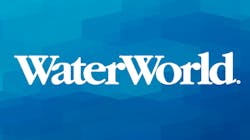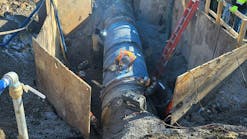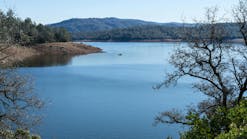Each year, Water Week is a chance to elevate the topic of water infrastructure and the importance of investing in water recycling to ensure sustainable, reliable drinking water supplies. For the second year in a row, this annual convening of industry insiders, congressional leaders and state and city governments has been held virtually due to the coronavirus pandemic, but its impact has never been greater.
During this year’s events, EPA Administrator Michael Regan addressed the water sector for the first time since being sworn in as the agency’s top official, acknowledging the important work being done by the sector and hinting at a renewed focus and level of support to come from Capitol Hill for water, wastewater, and stormwater projects in the future.
“These services are absolutely essential for healthy, thriving communities,” Regan said via Zoom. “Despite the challenges of the past year, at EPA we’ve demonstrated how investing in water infrastructure provides multiple benefits for communities. Through water infrastructure, we can improve public health and environmental protection while creating jobs and setting the stage for long-term economic development with strategic partnerships and community leadership. Water Infrastructure can help address key challenges we face as a nation, including closing the water equity gap and combating the threat of climate change.”
The Administrator’s remarks come at a critical time for our industry. The 2021 Value of Water Index, also released during Water Week, shows declining confidence in water infrastructure and overwhelming support for investing in these essential systems. Issued annually by the Value of Water Campaign, the latest report shows 78 percent of those surveyed across all demographics support proposals to reinvest in the nation’s water infrastructure. At the same time, there is a growing concern about the state of our nation’s water infrastructure, with only 47 percent of the poll’s respondents rating the nation’s water infrastructure as good.
We know that investing in water infrastructure can improve public health and bolster economic development through the creation of good paying jobs that benefit the community but improving public confidence in our water supplies is also important work.
There have already been several positive developments for the sector in recent months, including the establishment of the first-ever federal low-income assistance program for water (LIHWAP), and more federal funding for water infrastructure under President Biden’s American Jobs Plan. On April 29, the U.S. Senate overwhelmingly passed a bipartisan funding package for wastewater, stormwater, drinking water, and water reuse infrastructure. The bill, called the Drinking Water and Wastewater Infrastructure Act of 2021, seeks to reauthorize many core federal water infrastructure funding programs, including the Clean Water State Revolving Fund (SRF) and the Water Infrastructure Finance and Innovation Act (WIFIA) grant programs.
While these efforts may not address all of our needs, they are a bright light following a dark year and will shine a much-needed spotlight on our industry and the work that we do. If the second half of 2021 is anything like the first, I suspect this might be the best year yet for water.
As always, thanks for reading! WW




